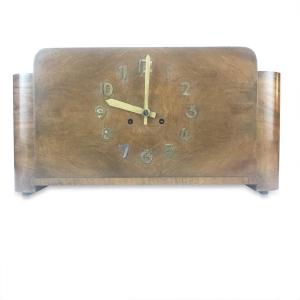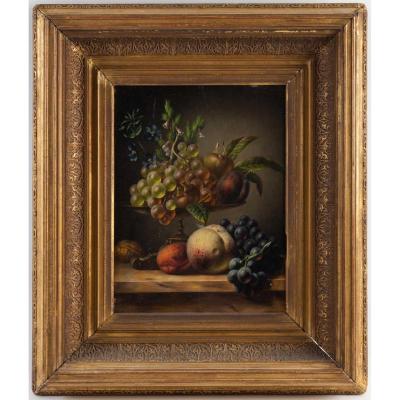The works present an abundance of objects are arranged on a table. The background of the disordered compositions consists of a wooden wall with hanging sketches and other objects. Both compositions are painted in soft ocher tones and have the same unseen source illuminating the display from the left, creating a dark shadow on the right side of both paintings.
Biscuits, a vase of flowers, earthenware pots, a wooden instrument divided into three parts, a score written on a tetragrammaton; mirrors, notes and paper sketches hang on the wall.
In the other work we find a lute, books, a knife, plums and lemons, a baskets of bread and cherries.
On the wall some sketches with figures and symbols of deception: glasses and keys. Glasses to look carefully and investigate reality, keys to open the doors that connect the two worlds: reality and illusion.
The iconographic influence of the works of Cristoforo Munari can be found in the ceramic vase, biscuits, lemons and majolica. He was an excellent painter well known for his trompe l’oeil still life, depiction of kitchens, instruments, rugs, vases, fruit and flowers, Cristoforo Munari was a protégé of Rinaldo d’Este, Duke of Modena. In 1703 he moved to Rome and then settled in Florence some time after 1706, becoming part of the Medici court and working for, among others, Ferdinand, Cosimo III and Cardinal Francesco Maria de’Medici, for the latter of whom he decorated the Villa Lampeggi with trompe l’oeil still lifes.
Good age related condition, set in modern frames, relined, restored with minor paintings retouches. Coming from a private collection of Milan.
Bibliograpy:
Zeri,Porzio La Natura Morta in Italia, Electa, 1989 Milano. Vol. II, pag. 415/416/417/419.
















































 Le Magazine de PROANTIC
Le Magazine de PROANTIC TRÉSORS Magazine
TRÉSORS Magazine Rivista Artiquariato
Rivista Artiquariato